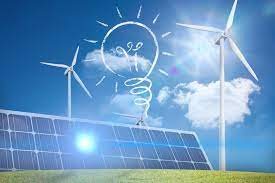
The best way to reduce retail store energy bills? Build energy efficiency into your everyday operations—quietly, consistently, and with tech that works in the background. You don’t need a complete store overhaul to save big. Just smart habits, strategic upgrades, and a little help from automation.
Let’s explore the best practices that make retail stores leaner, greener, and a lot cheaper to run.
Why does energy efficiency matter for retail stores?
Retail’s a high-touch game—bright lights, temperature control, display fridges, point-of-sale machines, and more. Every plug, bulb and aircon unit contributes to your operating costs.
And for smaller retailers especially, energy is one of the few things you can actually control.
It’s not just about slashing power bills—it’s about consistency, sustainability, and setting your store up for long-term resilience. With energy prices rising and climate expectations growing, efficient operations aren’t optional—they’re smart business.
What are the top areas to improve energy efficiency in retail?
1. Lighting: Start with the basics
Lighting can chew through 30–50% of a retail store’s electricity bill, especially if you’ve got spotlights, signage, and window displays running all day.
Smart upgrades:
- Switch to LEDs—they use up to 80% less energy than halogens.
- Install motion sensors in storerooms and back offices.
- Use timers for exterior signs and displays.
Bonus tip: Use warmer colour temps (3000K) in customer zones and cooler ones (4000K+) in work areas. Looks better, uses less power.
2. Air Conditioning: Small tweaks, big difference
Anyone who’s worked retail in a Sydney summer knows the struggle: crank the aircon or lose customers. But you don’t need to freeze the place.
Efficiency tips:
- Set thermostats between 22°C–24°C in summer.
- Block direct sun with blinds during peak hours.
- Use door seals to keep cool air in—and hot air out.
Install a smart thermostat and you’ll wonder why you didn’t sooner. Some learn your trading patterns and adjust automatically.
3. Refrigeration (if applicable): Silent energy hogs
Fridges and freezers are vital for grocers, cafes, bottle shops, and florists—but they’re also one of the biggest culprits behind runaway bills.
Quick wins:
- Clean condenser coils regularly.
- Install night blinds on open fridges.
- Check and replace worn door seals.
- Set defrost cycles to off-peak hours.
Did you know? An inefficient fridge can cost up to $500/year more than a tuned one.
4. Standby and Idle Power: The invisible leak
Phone chargers. EFTPOS docks. Unused screens. These trickle out energy even when they’re “off.”
What to do:
- Use smart power boards or timers for non-essential plugs.
- Turn off unused equipment overnight (display screens, music systems, etc.)
- Audit your store once a month—what’s always on that doesn’t need to be?
Anyone who’s ever seen their power bill spike after installing a new TV knows this one’s real.
How can you involve staff in energy-efficient operations?
Here’s where Cialdini’s Consistency principle kicks in. When staff feel like energy savings are part of store culture—not just “rules from head office”—they’re more likely to stick with it.
Try this:
- Run a friendly “Switch Off Challenge” between shifts or locations.
- Post usage updates in break rooms.
- Offer a small prize or shoutout for the team with the best savings.
Make energy efficiency part of your everyday rhythm, not just a one-off policy.
What systems can automate energy savings in retail?
Automation takes the pressure off you and your staff. The best part? It’s cheaper than ever.
Popular tools include:
- Smart thermostats – Automatically adjust based on time, temp, and store occupancy.
- Motion sensors – Ideal for storage areas and low-traffic corners.
- Smart plugs – Schedule or remotely control appliances.
- Energy monitors – Help track where and when your energy is being used.
Once installed, these tools work 24/7—and you barely need to think about them again.
FAQ: Energy-Efficient Retail Tips
Q: Is it worth upgrading old fridges or aircon units?
Yes. Older units are less efficient and costlier long-term. Replacing them may qualify for rebates or tax deductions.
Q: How much can I save from switching to LED?
Up to 80% in lighting energy use, plus longer lifespans = fewer replacements.
Q: Should I close my door to save on aircon?
If you don’t rely on foot traffic from outside—yes. Otherwise, use an air curtain to keep temps steady.
Final Thought
Retail is all about the margins—saving 10% here and 15% there adds up. Energy efficiency isn’t glamorous, but it’s a quiet engine of profit and sustainability.
And it doesn’t mean working in the dark or sweating through summer. It means working smarter—with tech, team habits, and systems that serve you long after you lock up for the night.
If you’re serious about wanting to reduce retail store energy bills, these best practices are your first—and best—step forward.
